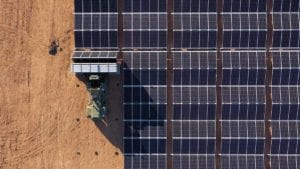The reign of the Tesla big battery in South Australia as the biggest grid-connected lithium-ion battery storage system in the world has come to an end.
LS Power said on Thursday (US time) that it had boosted the size of the Gateway project in the East Otay Mesa community in San Diego County in California to a capacity of 230MW – up from an initial 62.5MW/62.5MWh. It is expected to reach its full 250MW by the end of the month and next summer it will have three, and then four hours of storage.
This beats the Tesla big battery in Australia, officially known as the Hornsdale Power Reserve – and owned and operated by Neoen – which joined the grid in a blaze of publicity in late 2017 with the then world record installation of 100MW/129MWh. It is currently being upgraded to 150MW/194MWh with the final commissioning now taking place.
The biggest question for many in the industry is why it took so long for the Hornsdale battery to be overtaken, given its stunning success in lowering prices, making money for its owners, keeping the lights on, and changing the thinking about the shape of the future grid.
The world’s newest biggest big battery, was built over a year’s time, according to this cool time-lapse video by LS Power, and employed more than 100 workers on its peak construction days (remembering that the Hornsdale installation was built in less than 100 days).
As Greentech Media points outs, while the big battery’s unveiling marks a new milestone for the global battery industry, it also happens to coincide with California’s current energy crisis, as the state struggles to power through an historic heatwave.
As RenewEconomy reported here, over the past few days California’s grid operator (CAISO) has been forced to institute rolling outages across the state at a level not seen since the energy crisis of 2000-2001. The reasons for the outages are many and complex, but increase the pressure on a state that is setting a high bar for transitioning to renewables.
“Gateway and LS Power’s other California-based energy projects will support the state in its clean energy and storage goals,” said LS Power head of renewables John King, in comments on Thursday.
“By charging during solar production or off-peak hours and delivering energy to the grid during times of peak demand for power, our battery storage projects improve electric reliability, reduce costs and help our state meet its climate objectives.”
Elsewhere in California, LS Power has also installed the Vista Energy Storage system in the town of the same name, which has been operating since 2018 and was previously the largest battery storage project in the US at 40MW.
And there are more for the company in the pipeline, including Diablo Energy Storage (200MW) in Pittsburg, California; LeConte Energy Storage (125MW) in Calexico, California; and Ravenswood Energy Storage (316MW) in Queens, New York.
But batteries will get bigger and bigger. In the US, Vistra Energy is building the Moss Landing battery in Monterey Bay, California, which involves swapping an old gas-powered plant for 400 megawatts/1,600 megawatt-hours of batteries to support the Bay Area grid, which may be expanded to 1,500MW/6000MWh.
Florida Power & Light is working on a 409-megawatt/900-megawatt-hour battery to shift solar production into the evenings and displace decades-old gas plants.
In Australia, Neoen has proposed a 600MW big battery in Victoria, to help increase the capacity of the main transmission line to NSW, and has just unveiled a proposal for a big battery of up to 900MW/1800MWh as part of the Goyder South project. And then, of course, is the proposal for up to 30 gigawatt hours of battery storage as part of the proposed 10GW Sun Cable project, building the world’s biggest solar plant in the Northern Territory.








